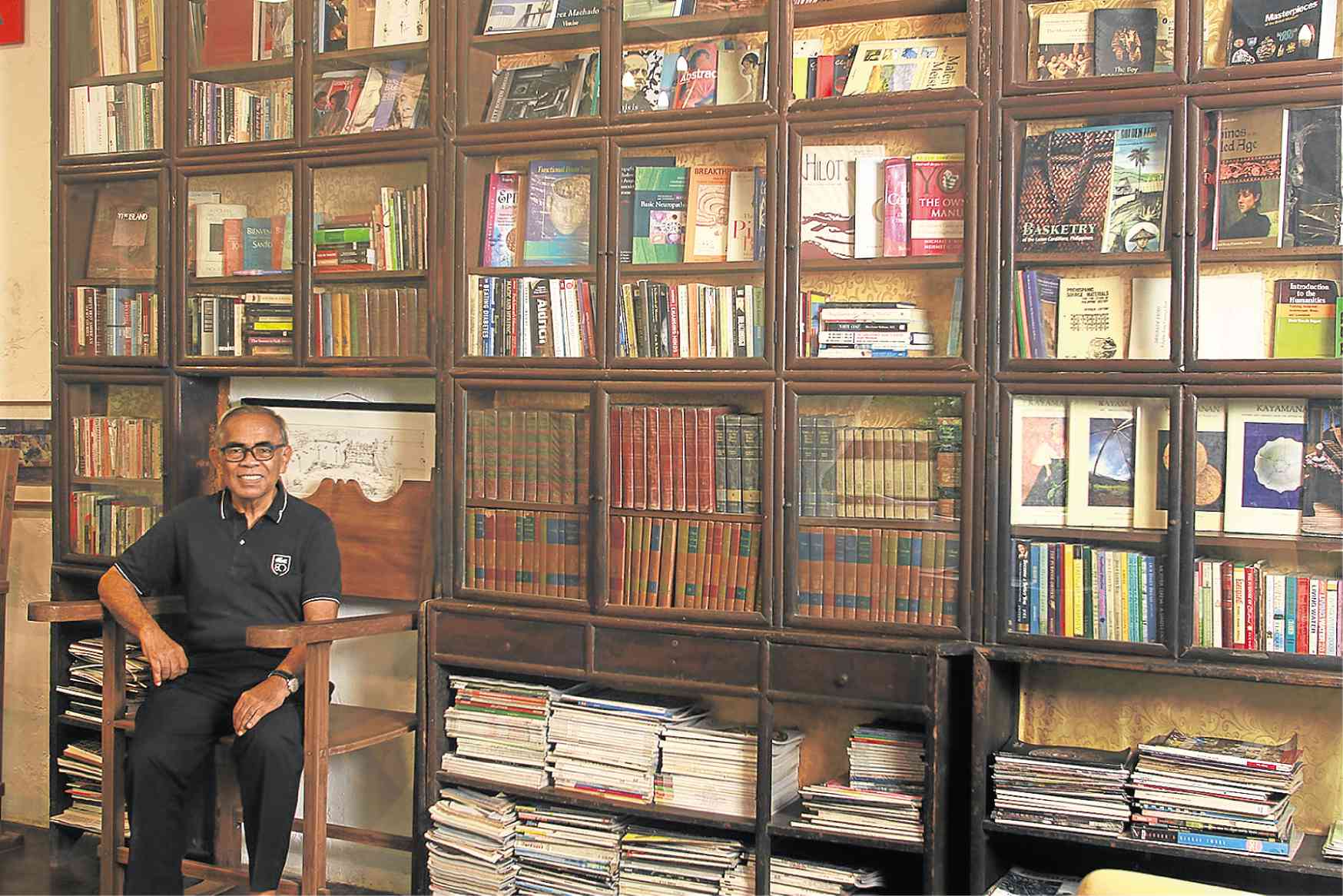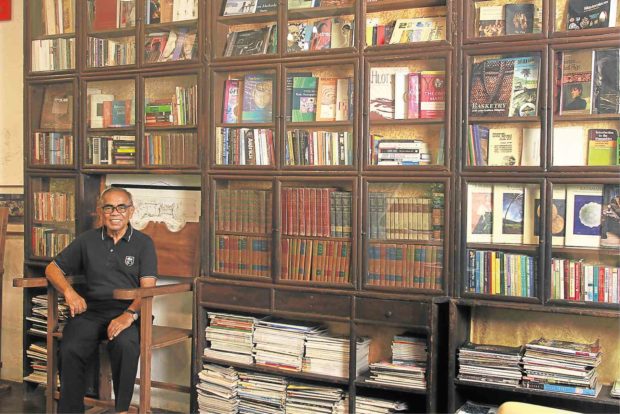
about arts and sciences at the museum library.
In the hills of Antipolo, the Pintô Art Museum beckons art lovers and other guests to the healing experience of art.
What started out as a weekend sanctuary for neurologist and art patron Dr. Joven Cuanang has morphed into a center for the arts and sciences and a unique travel destination.
Cuanang has been pushing the envelope, setting up six galleries for Philippine contemporary art. He has also established the Pintô Academy for Arts and Sciences, which holds lectures on the healing power of the arts. He hopes to launch soon an arboretum, a garden of indigenous plants.
Meanwhile, Pintô International aims to raise the profile of Filipino artists. Last year, it mounted the “Pintô Manhattan Manila” exhibit at Donna Karan’s Urban Zen Center in New York. The event attracted the chichi crowd. Proceeds went to the Asian Cultural Council’s scholarship programs.
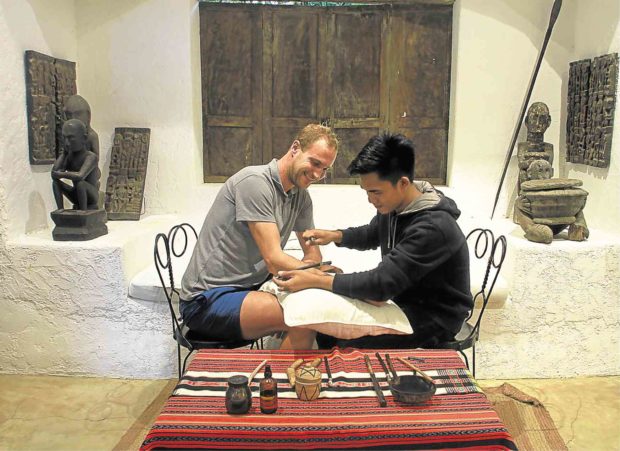
Pintô International will mount the “Pintôkyo” exhibit at Hillside Terrace Annex in Shibuya, Tokyo, Japan, on June 19. Curator is Antonio Leaño.
Cuanang said the Tokyo exhibit would feature the works of 55 Philippine artists.
In the Manhattan show, best sellers were Jigger Cruz, known for combining classic painting techniques with experiments in textures, and social realist Elmer Borlongan.
Cross section
The Tokyo exhibit will represent a cross section of Philippine art across two generations.
Leaño created an enigmatic painting depicting an astronaut holding the diagram of a toilet.
“It’s as if you are in the future looking at the past and asking what happened to humanity,” the artist explained.
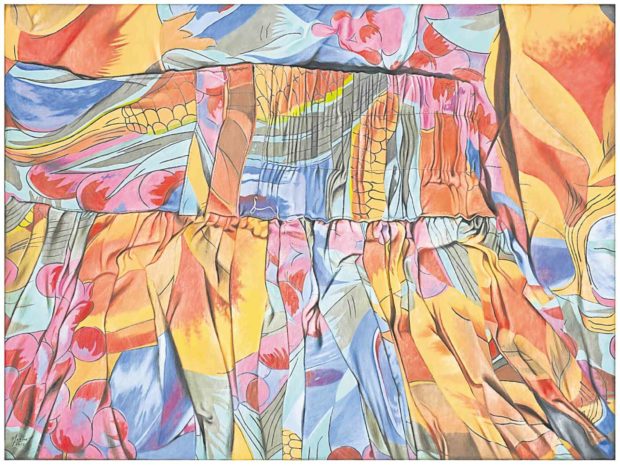
Sculptor Riel Hilario’s “Her Soul is as Light as the Bird” mimics an antique religious icon, with the patina of age, birds perched on its body.
Geraldine Javier’s “Blooms” is an abstraction and an outburst of bright colors.
Sculptor Anton del Castillo has the white naked figure of a man whose face is covered by a black mask. Kawayan de Guia’s painting is a collage showing a skull, a bird and a woman.
Cuanang has always had a soft heart for emerging talents. Second-generation artist Elias Miles Villanueva creates three pedestals with small sculptures encased in glass.
Candice Arellano works with mixed media and installations, combining painting, objects and textiles from her late mother’s chest.
John Paul Duray’s doll, “Boop Boop,” is a toddler with mouse ears and a large mouth on his belly.
Tokyo was chosen because it was recommended by fashion designer Rajo Laurel, a trustee of the Asian Cultural Council. Rajo’s father, José Laurel V, is the Philippine ambassador to Japan. Rajo coined the title, “Pintôkyo.”
Pintô means “door,” and Cuanang explained that the art museum is a “door to new possibilities, new directions, a door to reach out to the world, a door for everyone to come in.”
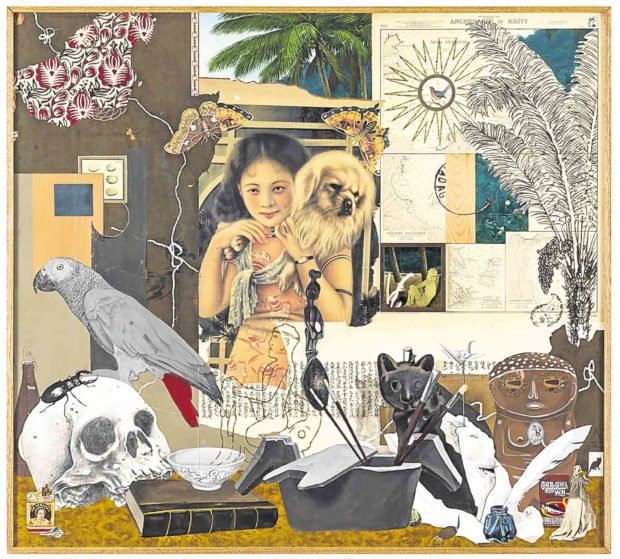
Pintô can draw 1,500 visitors on a Sunday, majority of whom have no background in the arts. They are drawn by the sloping terrain of the museum grounds that provide partial views of bell towers and outdoor sculptures, pocket gardens and little surprises such as an amphitheater on the roofline providing a panorama of the metropolis below.
The bold but round-edged buildings glisten with whitewashed walls, cutting a striking contrast against the flamboyant foliage and colorful tropical blooms. The scent of ylang-ylang wafts in the air.
Visitors can enjoy a wide menu of international cuisine at the new Café Rizal, which has soothing piped-in music.
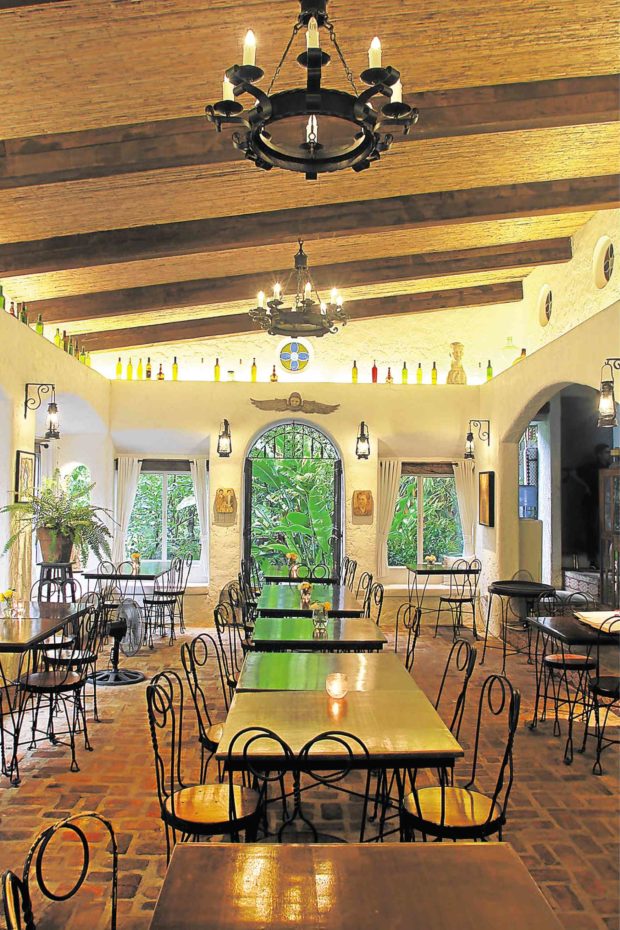
Learning center
Cuanang sought to expand the concept of Pintô as a learning center.
“For so long, it was all contemporary art,” he said. “I wanted to present something precolonial to highlight the talent of the Filipinos before the coming of Spain and America. Then in the 15th century, the Muslims came to the south where their Islamic culture blossomed.”
These artifacts are displayed in mission-style buildings, characterized by stucco plaster walls, wooden ceiling beams, parapet rooflines and arches. Every space has wide bay windows where one can laze around and savor the garden views.
Inspired by National Artist Benedicto Cabrera’s museum of Cordillera art in Baguio, Cuanang acquired the entire bulul (rice granary god) collection of the late anthropologist and interior and landscape artist David Baradas.
As tribute to his home province, Ilocos Norte, Cuanang acquired Baradas’ assortment of indigenous patterned textile, the abel Iloko.
The collection was curated by gallerist Ramon Villegas before he died.
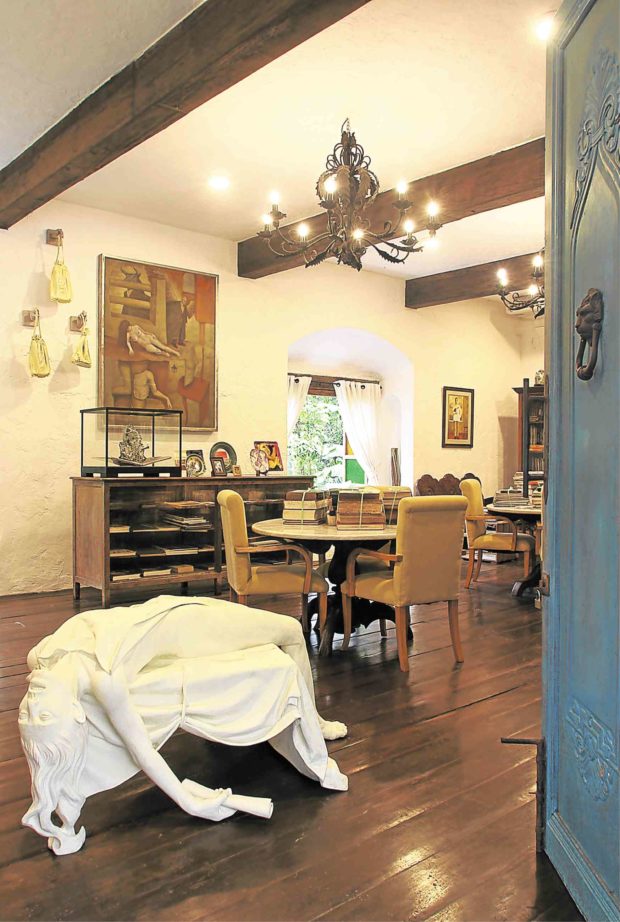
background are sculpture and painting by José John Santos.
In his elegant handwriting at the Museum of Indigenous Art, Cuanang explained its raison d’être: “The pristine beauty of every ritual and functional object, textile, jewelry and others speak eloquently of our soul as a people.”
To bring the Cordillera culture to life, Denden Wigan, a descendant of Whang-od, the country’s oldest tattoo artist, makes tattoos using authentic pine ash and pomelo needles. A two-inch drawing costs P800.
For the Mindanao collection, Cuanang gathered objects and textiles from Margie Moran-Floirendo and antique dealer Maria Closas. Though modest in size, the collection includes fabric from Sulu royalty.
Asked if he ever got back his investment, Cuanang replied in modesty, “I have always been a teacher. I like it when people get to know a bit more about our culture. Knowing our identity as a Filipino is important.”
To satisfy his thirst for learning, he set up Pintô Academy of Arts and Sciences; it focuses on neuroaesthetics, a new science on how the brain responds to arts. He cited the example of dance which could improve brain functions.
“It retards the degeneration of the brain. Doing complex movement patterns induces the formation of new connections inside the brain.”

The academy has that old-world feel with caryatids on the walls, a sculptured well by the House of Precast, and stained-glass windows. The auditorium is lined with replicas of 1940s wooden cinema chairs.
The lectures conducted by foreign and local experts covered such subjects as “Osiris and the Unconscious,” and arts for healing.
A tribute to American neurologist and author Oliver Sacks discussed his exhortation on doctors to look at their patients as souls with a story.
Cuanang said he hoped the academy would provide a more holistic dimension to the museum.
“There are pockets of research centers all over the world that study the neurological basis of art forms,” he explained. “I’m trying to utilize this for knowledge for the healing process so that we are not pharmaceutical-dependent.”
By yearend, the arboretum will open. Cuanang sought the help of Ronald Achacoso of the Philippine Native Plants Conservation Society Inc.
“I’ve always been talking about Filipino art from before and now. The natural progression would be culture, ecology and flora.”
Ultimately, creating the Pintô brand has been a healing process for him.
“I’m already 78,” Dr. Cuanang said. “If you’re going to retire, sitting around and looking at the TV won’t do any good to your body and brain. I consider (Pintô) as a challenge, but it’s also very gratifying. I provide something that is beautiful for a lot of people. At the same time, I get benefits from it. How much more joy can you get when you see a thousand people coming up here on a weekend? ” —CONTRIBUTED

